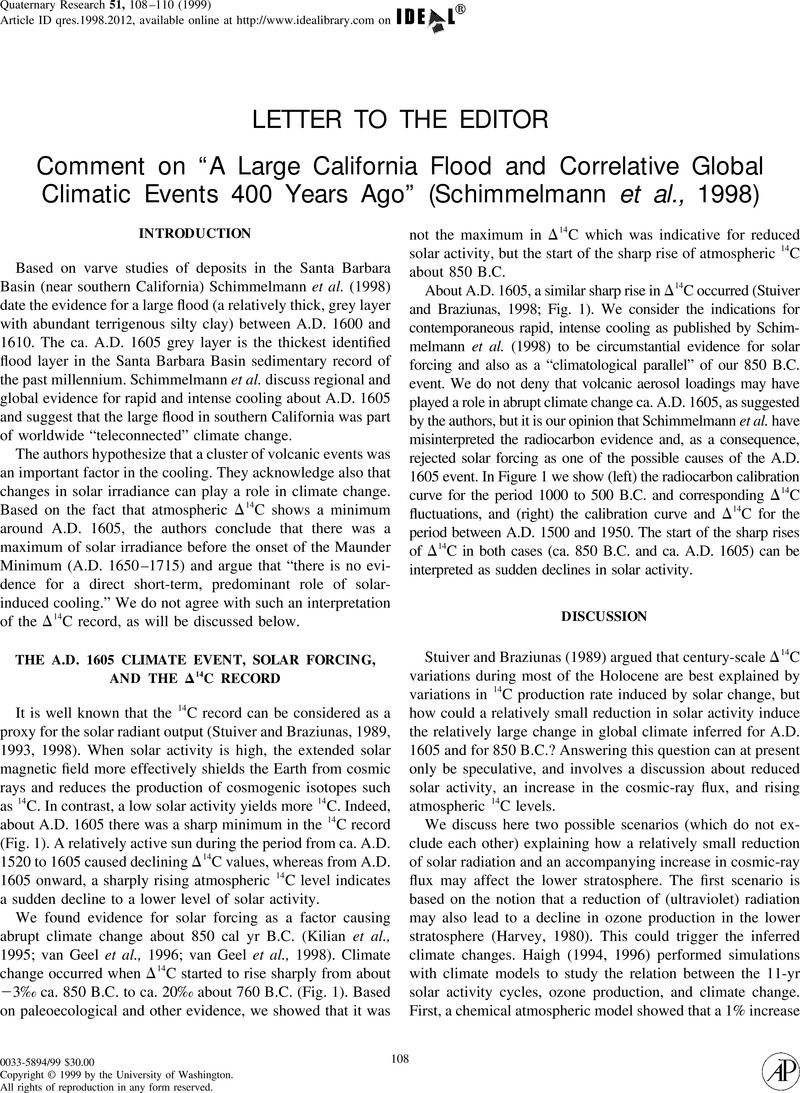Crossref Citations
This article has been cited by the following publications. This list is generated based on data provided by Crossref.
Marchant, Robert
Behling, Hermann
Berrio, Juan Carlos
Cleef, Antoine
Duivenvoorden, Joost
Hooghiemstra, Henry
Kuhry, Peter
Melief, Bert
Geel, Bas Van
Hammen, Thomas Van der
Reenen, Guido Van
and
Wille, Michael
2001.
Mid- to Late-Holocene pollen-based biome reconstructions for Colombia.
Quaternary Science Reviews,
Vol. 20,
Issue. 12,
p.
1289.
Hausmann, S.
Lotter, A. F.
van Leeuwen, J. F.N.
Ohlendorf, Ch.
Lemcke, G.
Grönlund, E.
and
Sturm, M.
2002.
Interactions of climate and land use documented in the varved sediments of Seebergsee in the Swiss Alps.
The Holocene,
Vol. 12,
Issue. 3,
p.
279.
Speranza, A
van Geel, B
and
van der Plicht, J
2003.
Evidence for solar forcing of climate change at ca. 850 cal BC from a Czech peat sequence.
Global and Planetary Change,
Vol. 35,
Issue. 1-2,
p.
51.
Schimmelmann, Amdt
Lange, Carina B.
and
Meggers, Betty J.
2003.
Palaeoclimatic and archaeological evidence for a 200-yr recurrence of floods and droughts linking California, Mesoamerica and South America over the past 2000 years.
The Holocene,
Vol. 13,
Issue. 5,
p.
763.
De Jager, C.
2005.
Solar Forcing of Climate. 1: Solar Variability.
Space Science Reviews,
Vol. 120,
Issue. 3-4,
p.
197.
Turney, Chris
Baillie, Mike
Clemens, Steve
Brown, David
Palmer, Jonathan
Pilcher, Jonathan
Reimer, Paula
and
Leuschner, Hanns Hubert
2005.
Testing solar forcing of pervasive Holocene climate cycles.
Journal of Quaternary Science,
Vol. 20,
Issue. 6,
p.
511.
Versteegh, Gerard J. M.
2005.
Solar Forcing of Climate. 2: Evidence from the Past.
Space Science Reviews,
Vol. 120,
Issue. 3-4,
p.
243.
VORREN, KARL‐DAG
JENSEN, CHRISTIN ELDEGARD
and
NILSSEN, EILIF
2012.
Climate changes during the last c. 7500 years as recorded by the degree of peat humification in the Lofoten region, Norway.
Boreas,
Vol. 41,
Issue. 1,
p.
13.
Magny, Michel
2013.
Orbital, ice-sheet, and possible solar forcing of Holocene lake-level fluctuations in west-central Europe: A comment on Bleicher.
The Holocene,
Vol. 23,
Issue. 8,
p.
1202.



